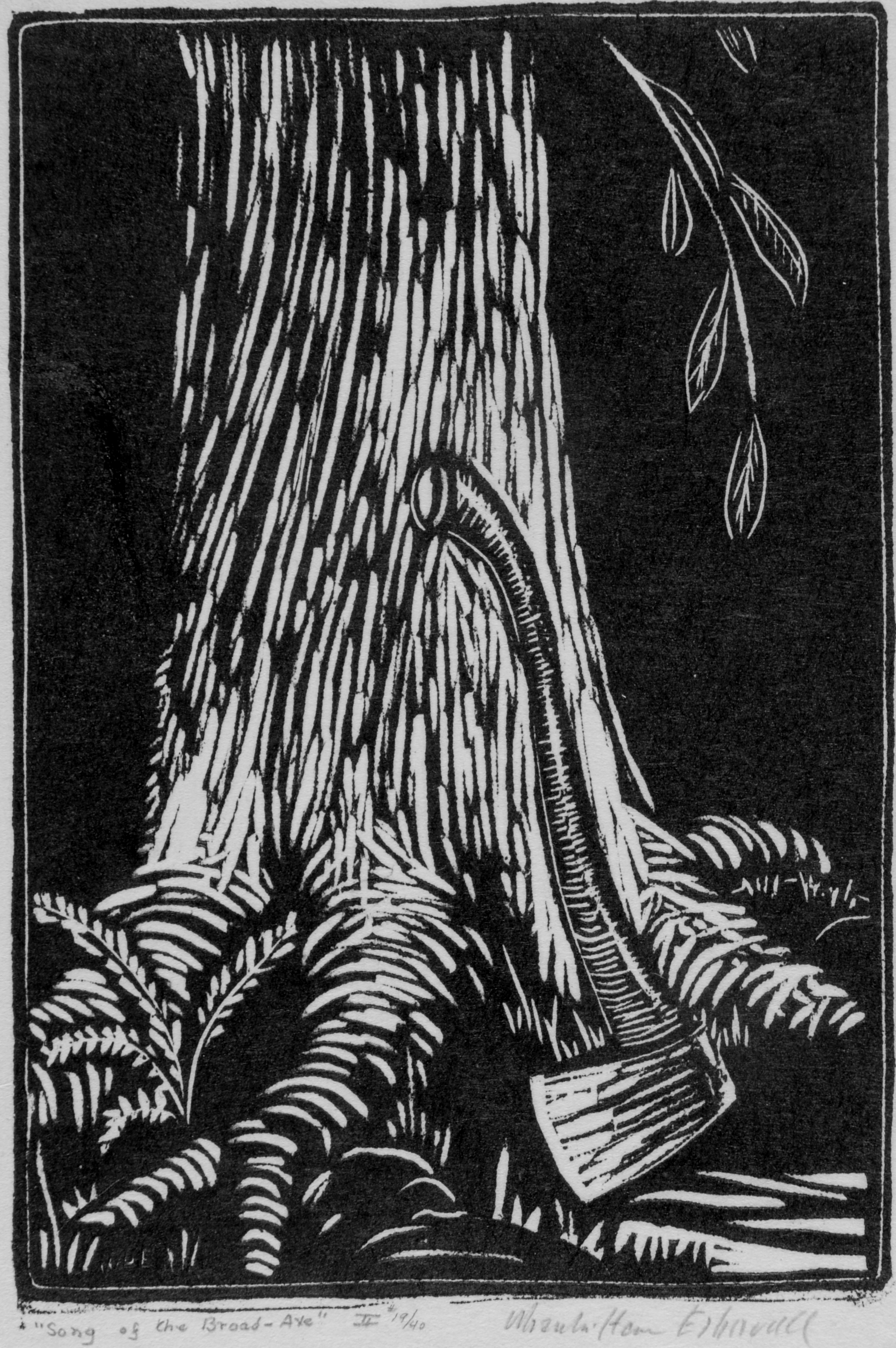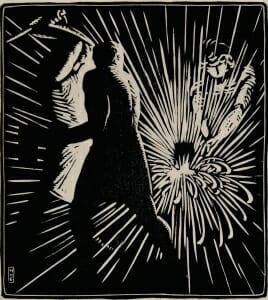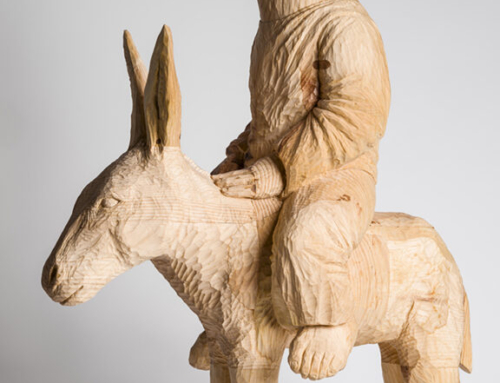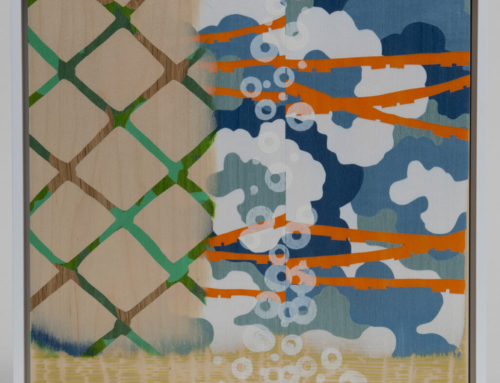Eighty eight years ago, in 1924, Philadelphia’s Centaur Press published Walt Whitman’s The Song of the Broad-Axe, illustrated with woodcuts by Wharton Harris Esherick. The prospectus for the book promised a quality book “bound in paper boards decorated with designs cut on wood by the artist and printed in colour.” Furthermore, the book was to be “printed upon a specially made pure rag paper of natural mellow colour.” The edition was 400 copies, of which only 375 were for sale at $7.50 each.
The Centaur Press was an offshoot of the Centaur Bookshop, located at 1224 Chancellor Street in Philadelphia. The bookshop was the pet project of Harold Mason, who wanted a cultural salon as much as he wanted a bookshop. The first floor shop stocked all of the latest and best the literary world had to offer, including whatever was controversial. The second floor was a “private club” where intellectual elite of Philadelphia gathered after hours for cocktails and conversation. Because of Prohibition, “members” of the club had lockers where they could keep their liquor.
The bookstore was not enough for Mason. He also wanted to publish books that were art. The prospectus noted “the Press will be governed by two considerations: first, the publication of material of sufficient literary or artistic value; second, the production of books in a format to merit the attention of the collector.”  Mason had been impressed by Rhymes of Early Jungle Folk, where Wharton’s woodcuts illustrated Mary Marcy’s poems about evolution. He invited Wharton to illustrate The Song of the Broad-Axe as the first publication of the Centuar Press.
Mason had been impressed by Rhymes of Early Jungle Folk, where Wharton’s woodcuts illustrated Mary Marcy’s poems about evolution. He invited Wharton to illustrate The Song of the Broad-Axe as the first publication of the Centuar Press.
Wharton carved twenty blocks for Broad-Axe: thirteen were prints to illustrate the text, one was an illustration for the dust cover, four were designs for the book’s cover, one was a Centaur Press logo for the title page, and one was circular designs for the end papers. This last block was used only in the hand-bound prototype that Wharton produced.
In 2009, to commemorate the 85th anniversary of the book, the Museum displayed twelve of the original wood blocks that Wharton carved for this book, along with the hand bound prototype in the Visitor Center Gallery. In 2010, the museum reproduced both a collector’s and trade edition of Wharton’s illustrated and illuminated Song of the Broad-Axe. Both are available in our Visitor Center or in our online webstore. www.whartonesherickmuseum.org/store.html
**reprinted from the Winter 2009 edition of “The Quarterly”






